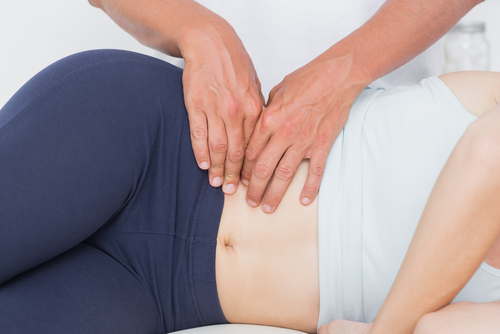DIAGNOSIS
Although your condition may be diagnosed during your first exam, don’t be surprised if you need to have a series of medical appointments and tests. For many women who have pelvic pain, diagnosing the cause is a process of elimination that takes a while.
Even if tests don’t find any problems, it doesn’t mean that there’s no physical cause for your chronic pain. Tests aren’t yet able to detect all causes.
Initial tests
It is a good idea to make a calendar or diary of your symptoms, menstrual cycle, sexual activity, and physical exertion. And keep track of any other things that you think are important, such as stressful events or illnesses. Bring it with you when you see your doctor.
To begin narrowing down the list of possible causes of your pain, your doctor will review your symptom diary and:
- Ask about your health history. This includes the history of your menstrual cycle and any pelvic surgery, radiation treatment, sexually transmitted infection, pregnancy, or childbirth.
- Do a pelvic exam to look for signs of abnormalities. You may also have a digital rectal exam. Your doctor may conduct these exams in a slower, more thorough manner than a routine pelvic exam, carefully checking for tender areas.
You may also have tests, such as:
- A pregnancy test. If your test is positive, you’ll also have an ultrasound to check for signs of a tubal pregnancy.
- Blood tests, to look for infection, anemia, and other problems.
- Complete blood count.
- Sedimentation rate.
- Tests for sexually transmitted infections.
- Urine tests, to look for infection and kidney stones.
- Stool tests, to check for signs of blood.
Further testing
Sometimes more tests are needed. Your doctor may recommend one or more of the following:
- Imaging tests (tests that take pictures of the pelvic area), such as:
- Abdominal ultrasound and/or transvaginal ultrasound of the pelvic area using a small ultrasound device inserted into the vagina.
- Intravenous pyelogram, which uses an injected dye combined with X-rays to create pictures of the kidneys, bladder, ureters, and urethra.
- CT scan, which uses X-rays to create pictures of organs and bones.
- MRI, which uses a magnetic field and pulses of radio wave energy to create pictures of organs and bones.
- Laparoscopy. This surgical procedure uses a thin, lighted viewing instrument inserted through a small cut in the belly. If needed, scar tissue or a growth can also be removed during the procedure.
- Cystoscopy, which uses a viewing instrument inserted through the urethra into the bladder.
- Urodynamic studiesUrodynamic studies. In these tests, a catheter is inserted through the urethra into the bladder to check for bladder problems.
- Other evaluations:
- For irritable bowel syndrome.
- For abdominal wall “trigger points.” These are specific places on your abdomen that cause pain when pressed.
Your mental health
Chronic pain can have a wearing effect on the mind and emotions, which can in turn make harder to manage pain.
Your doctor may recommend a mental health assessment. You’ll be asked questions to find out whether such conditions as depression, insomnia, or stress are adding to or being caused by your chronic pain.
For the best chance of recovering from pain, you will need treatment for emotional problems like these, plus treatment for any known physical causes of pain.
RECOMMENDED MEDICATIONS
If your doctor can pinpoint a specific cause, your treatment will focus on eliminating that cause. However, if the cause of your pelvic pain can’t be found, treatment wil focus on managing your pain.
Medicines to control hormones
- Birth control pills are commonly used for menstrual pain. They are also often prescribed for endometriosis-related pain.
- High-dose progestin is sometimes prescribed for pain related to endometriosis.
- Gonadotropin-releasing hormone agonists can relieve pain from endometriosis by stopping production of the hormones that make endometriosis worse. This treatment may also relieve pelvic pain that comes in cycles but isn’t related to endometriosis and pelvic pain related to irritable bowel syndrome. But this short-term treatment brings on symptoms of menopause, with side effects such as hot flashes and loss of bone density, for as long as you take it.
Medicines to control pain
- Prescription nonsteroidal anti-inflammatory drugs (NSAIDs), taken on a regular schedule, help relieve pain caused by inflammation or menstruation. If one type doesn’t work for you, then your doctor may recommend another.
- Tricyclic antidepressant medicines are sometimes used to treat chronic pain in other areas of the body. Limited research suggests that they help relieve chronic pelvic pain in some women.2
- Anticonvulsant medicines such as gabapentin are sometimes used to treat chronic pelvic pain.
- Opiate pain medicine is only recommended as a last-resort treatment for severe pelvic pain.
Antibiotics
If infection is the cause of pain, your doctor may prescribe antibiotics.
Antidepressants
Tricyclic depressants, such as amitriptyline, nortriptyline, and others seem to have pain-relieving as well as antidepressant effects.


